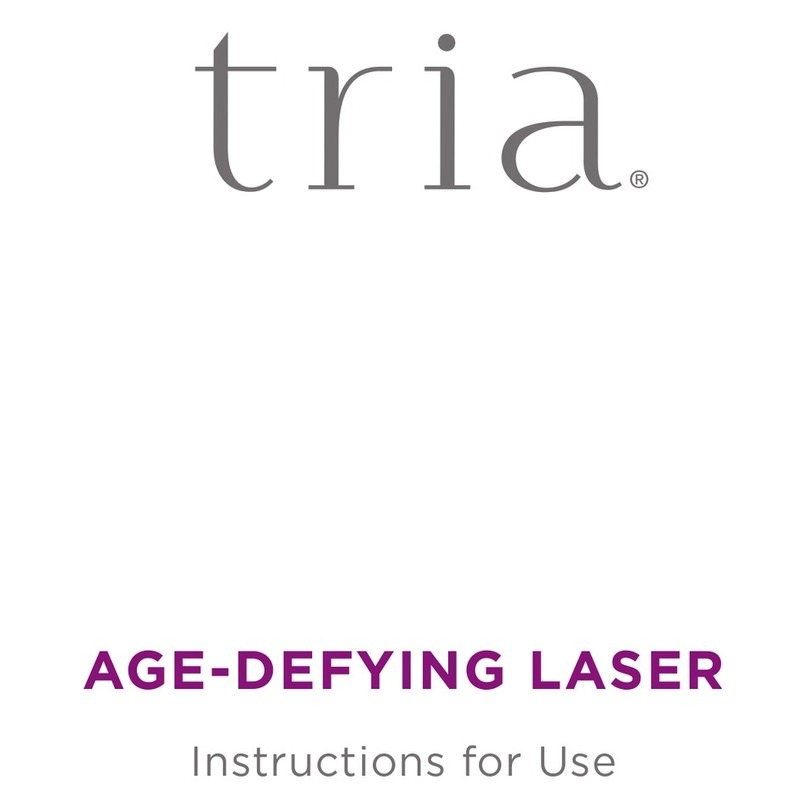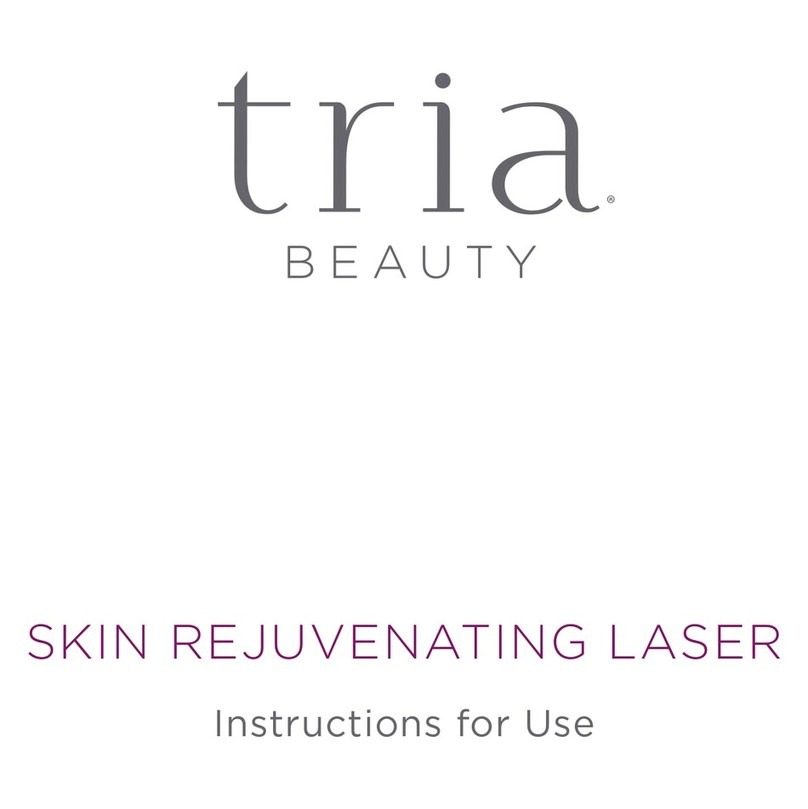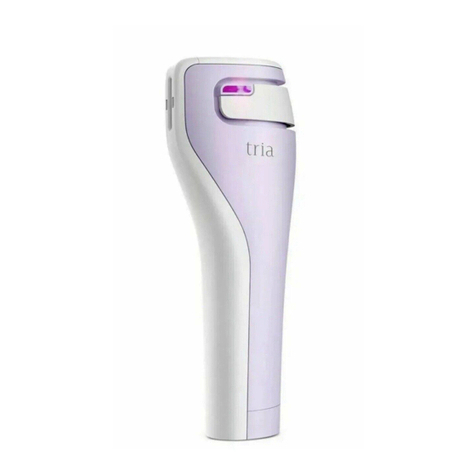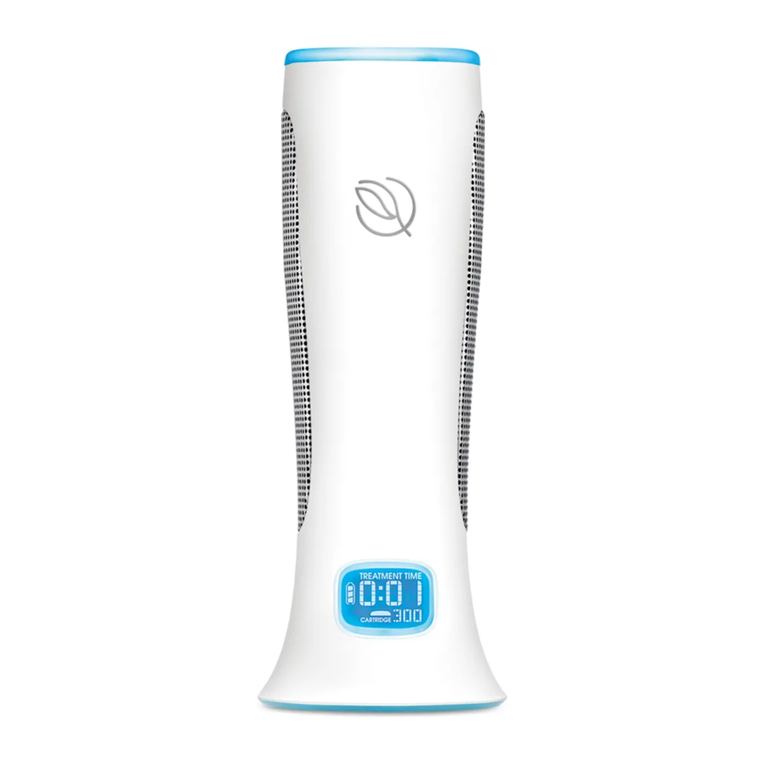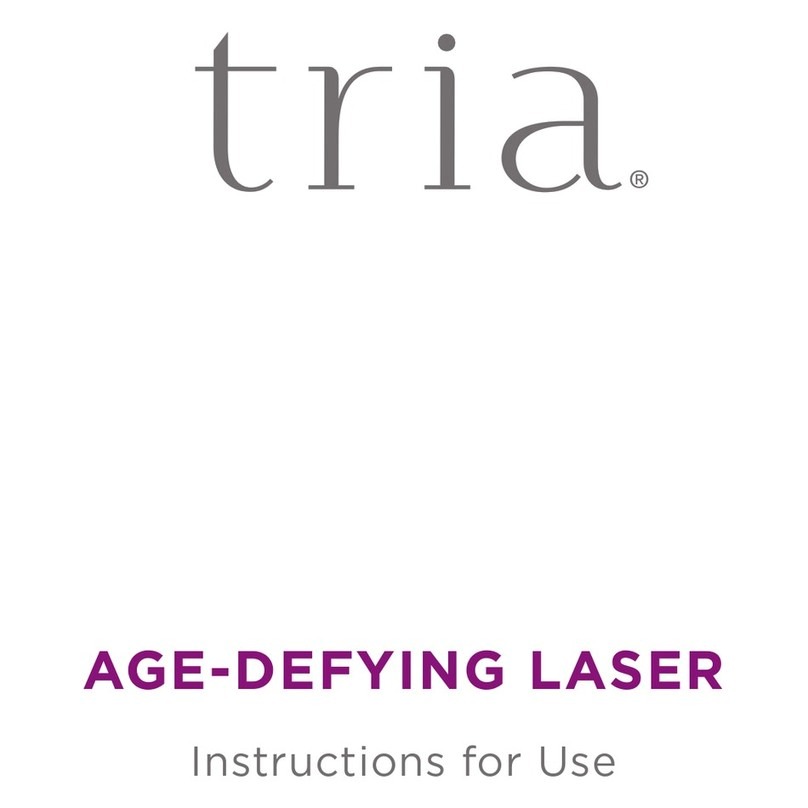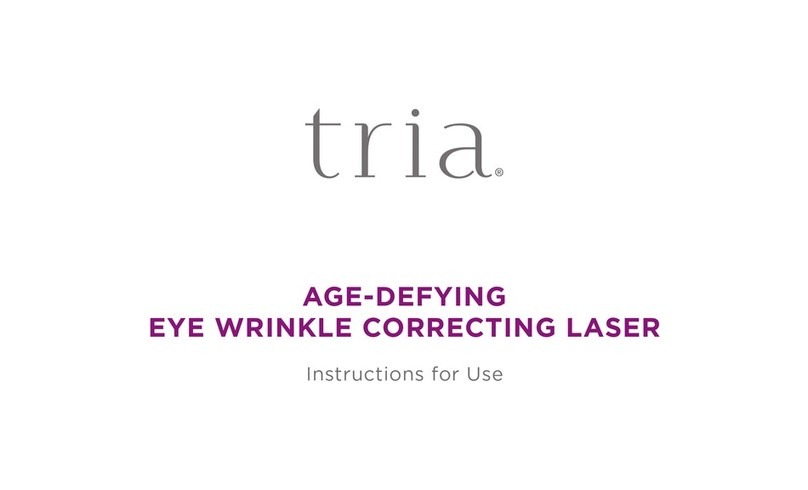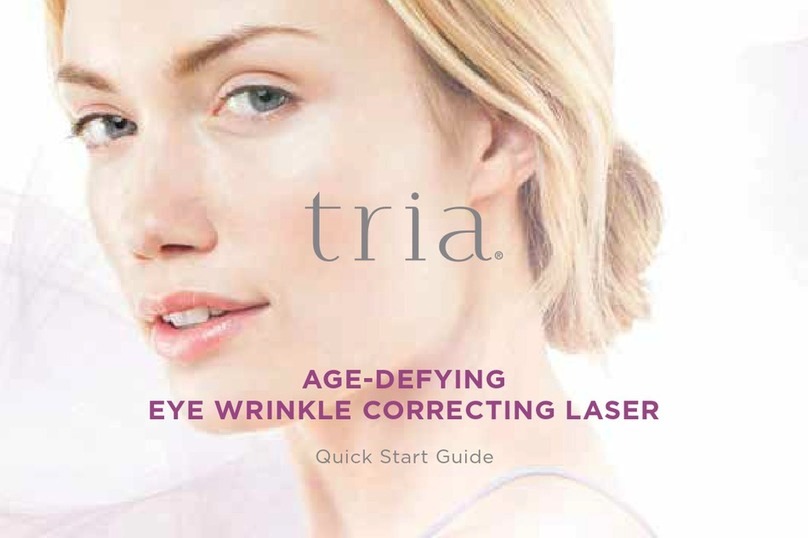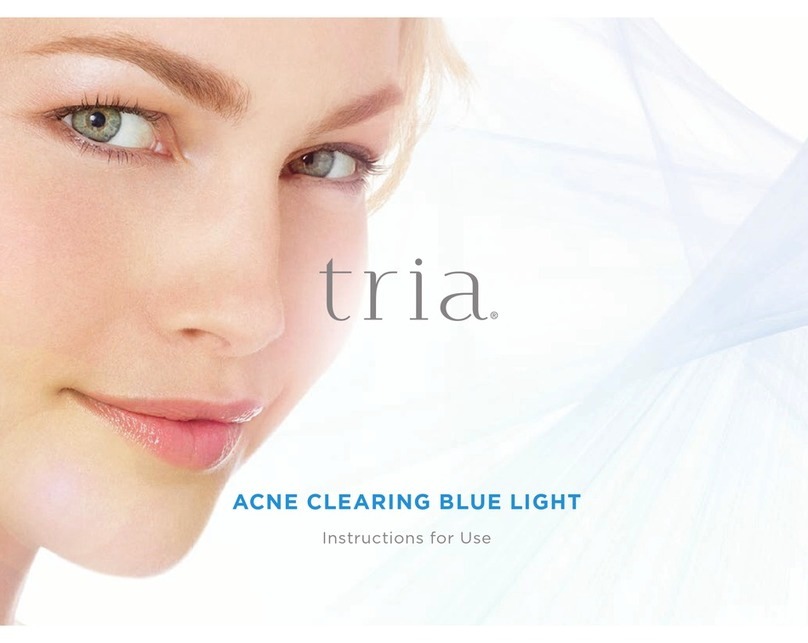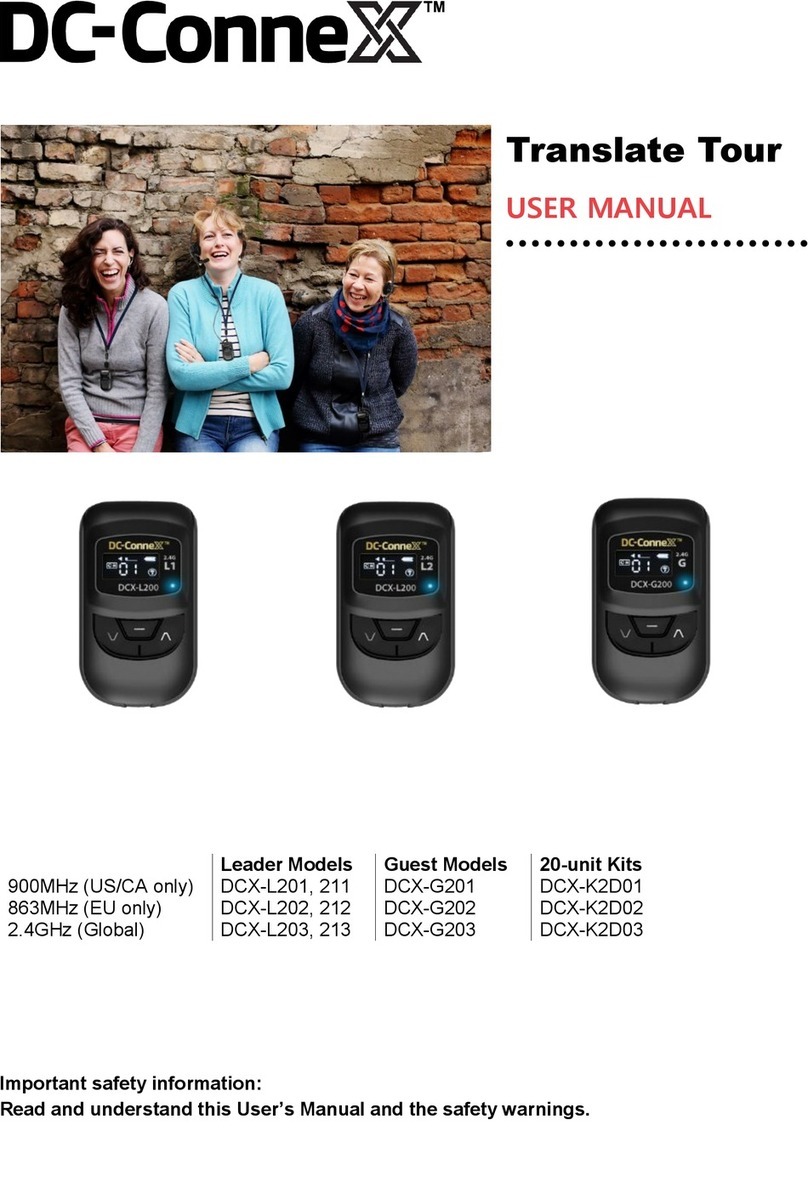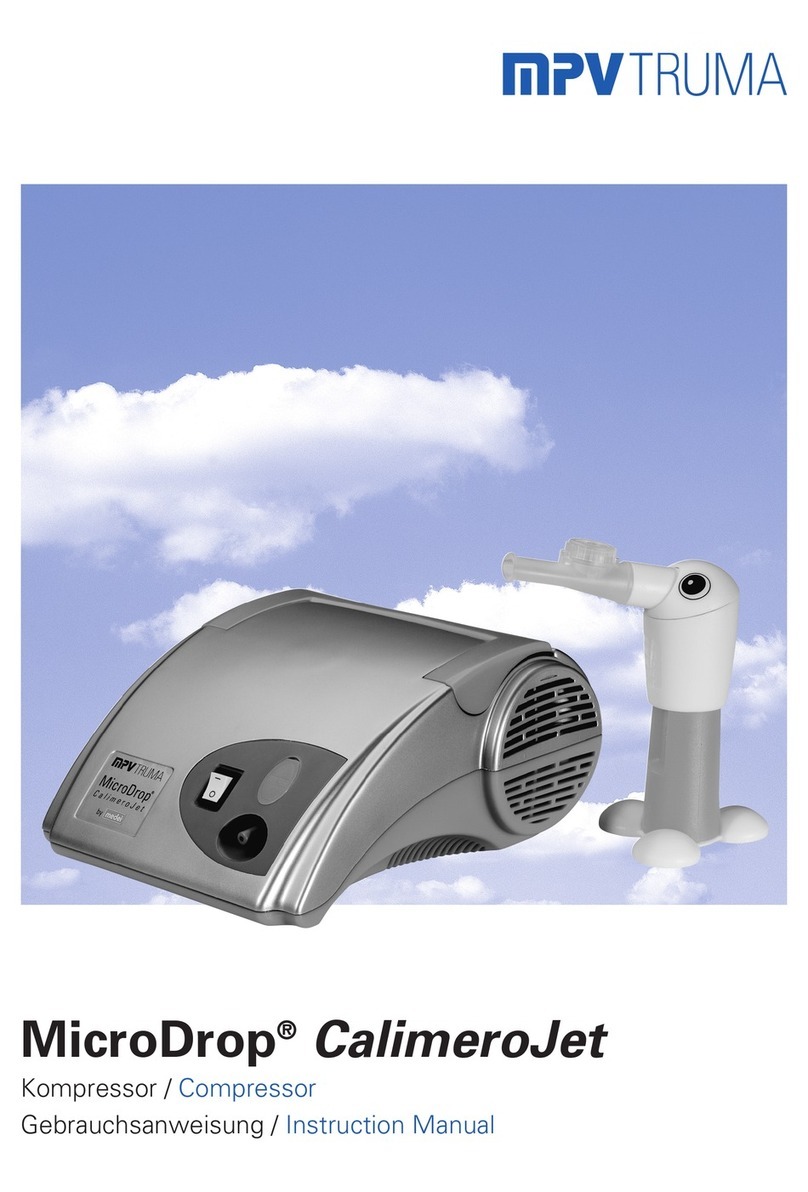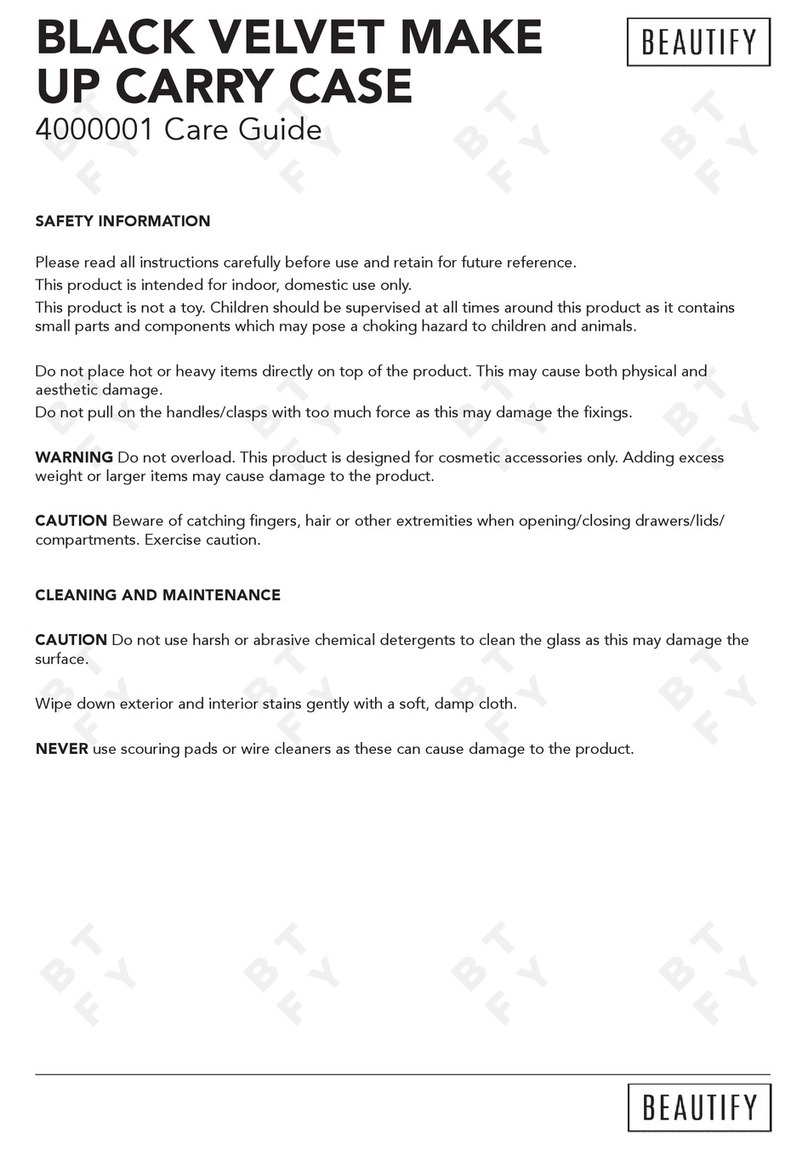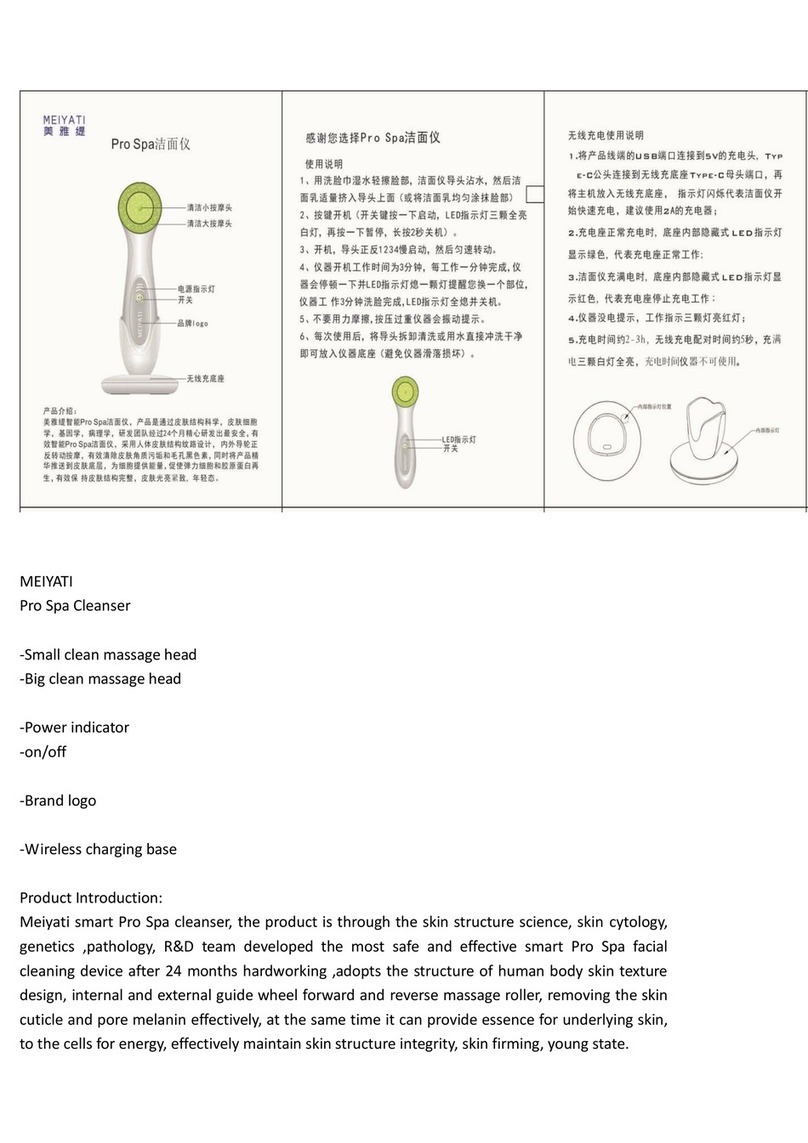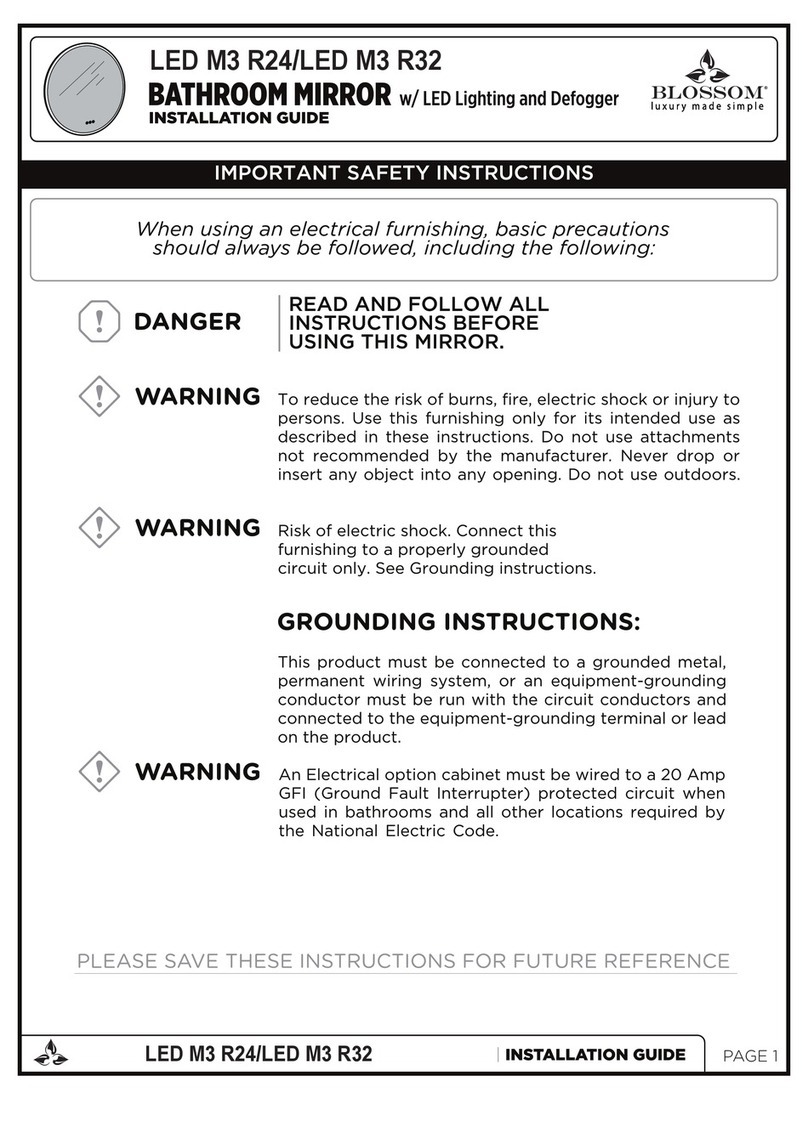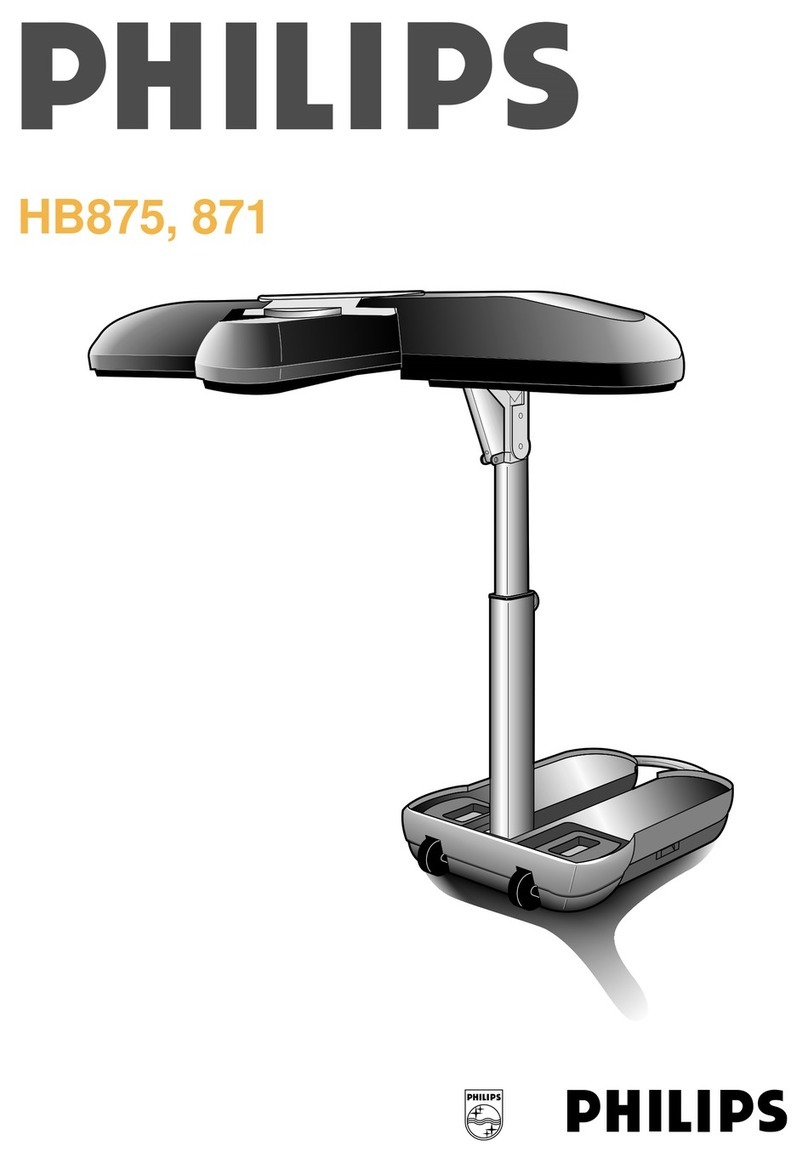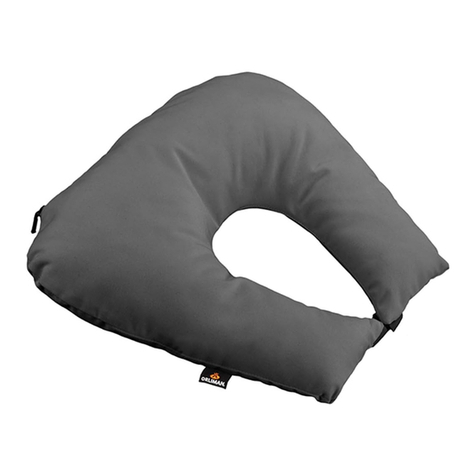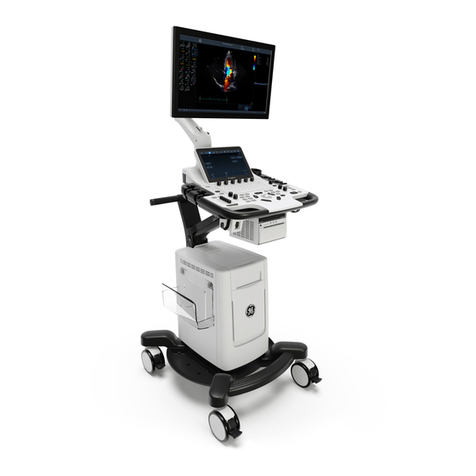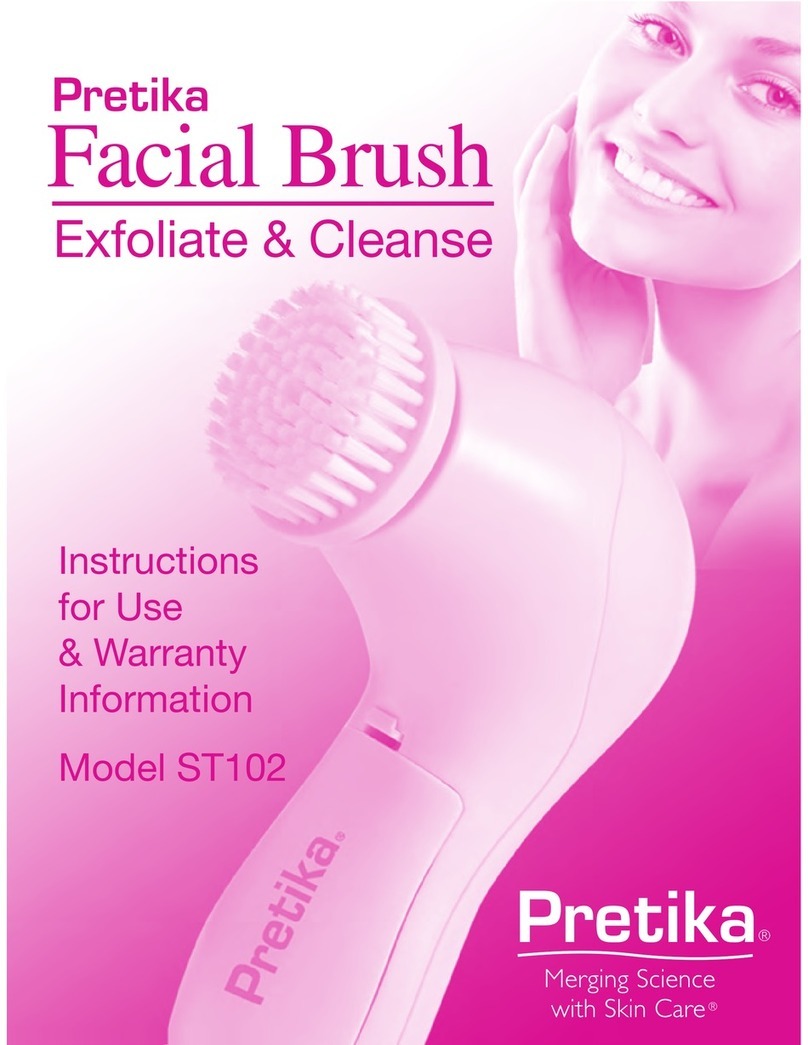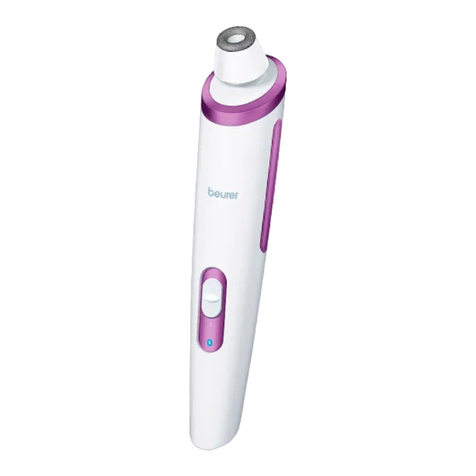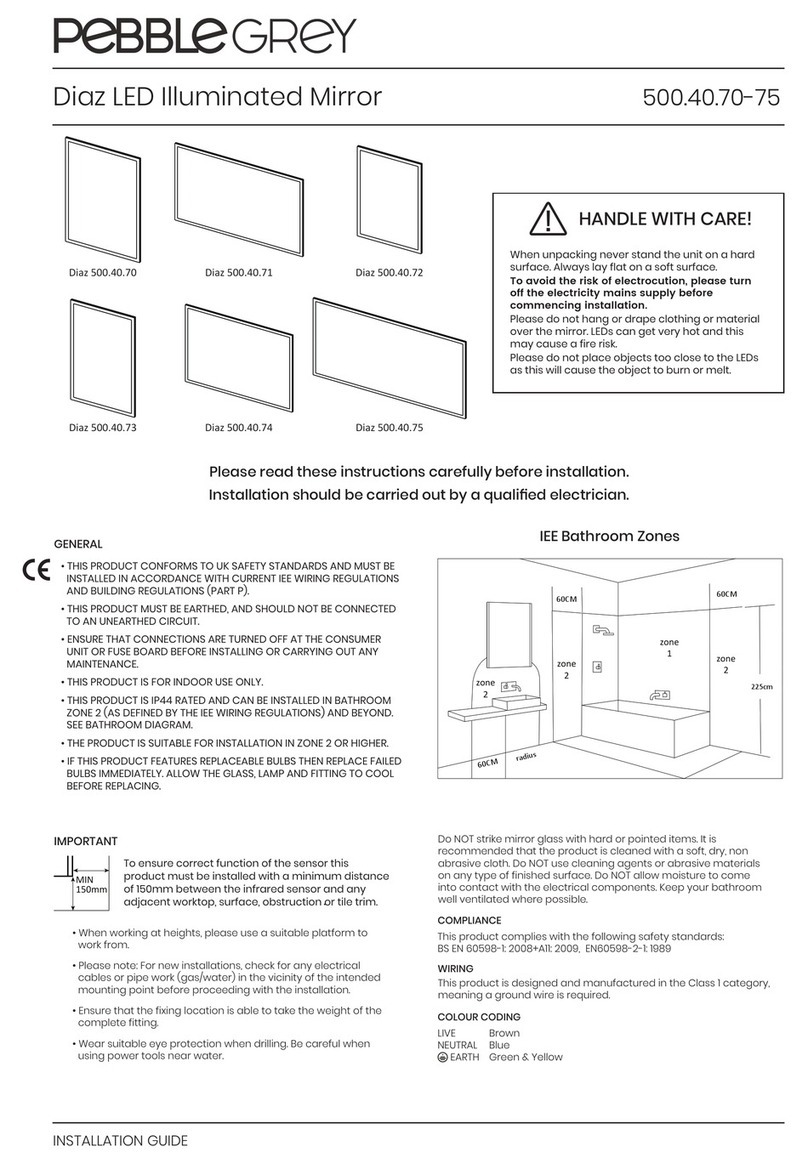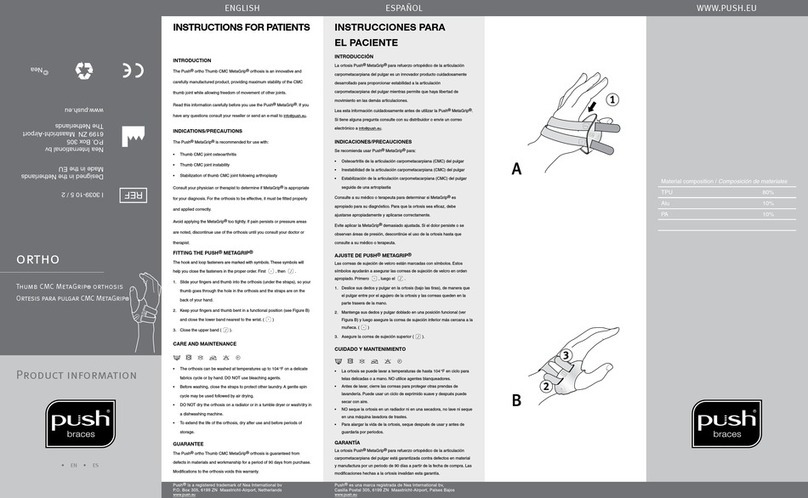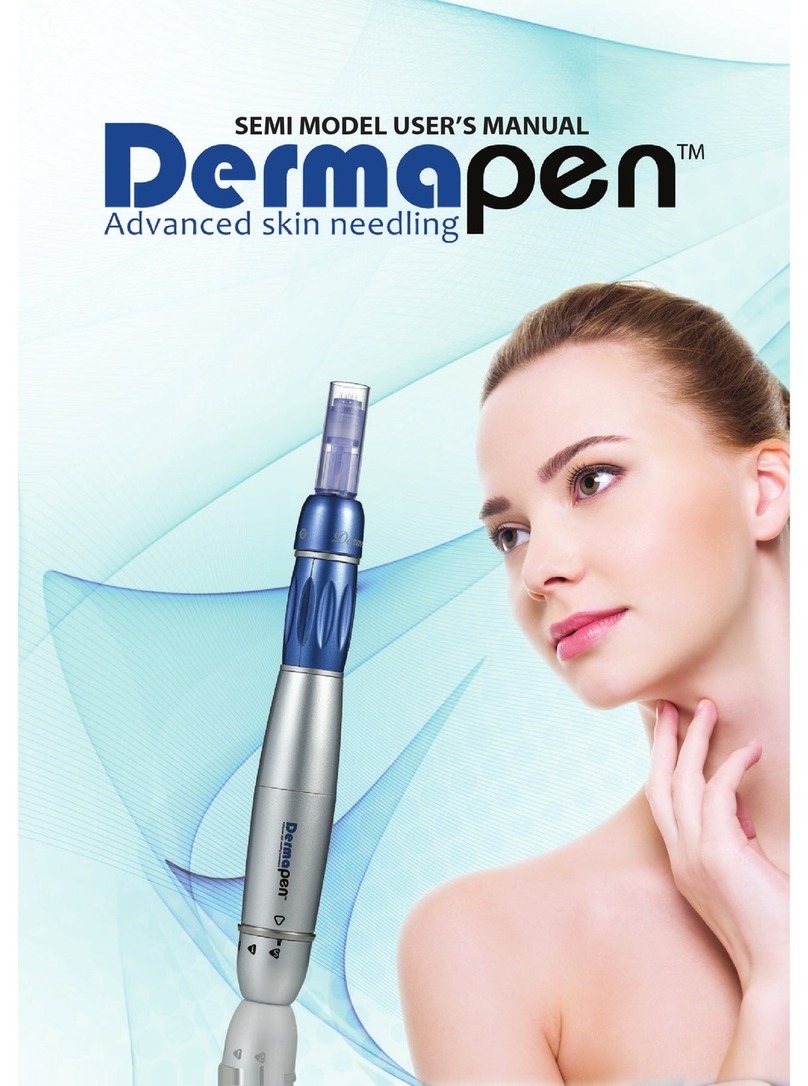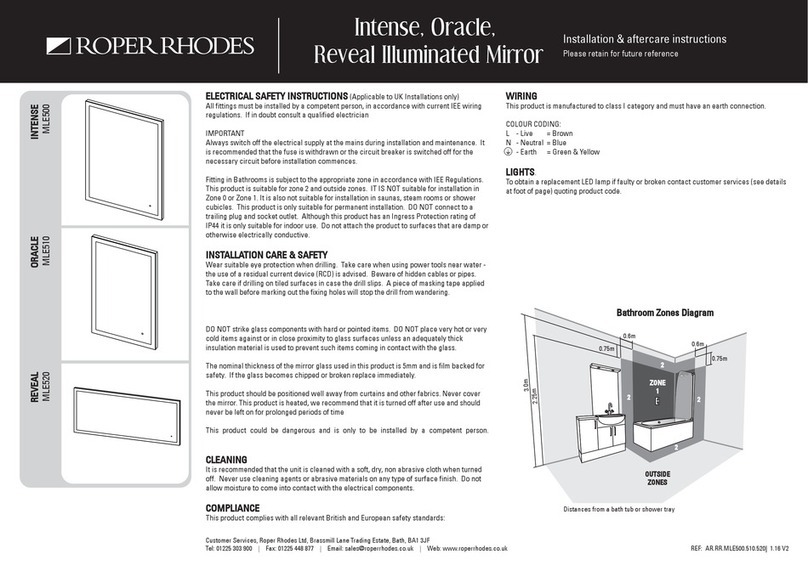EN 8
BENEFITS AND RISKS
A medically supervised clinical study has
shown that the Tria Laser Precision is safe
and works when used as directed.
Seventy-nine (79) users performed a 6-week
course of treatment (3 treatments) and all
side effects were observed. The number
of hairs at each treatment site was counted
before each treatment and at 1, 2, 3, 6,
and 12 months after the last treatment.
No additional treatments were performed
after the third treatment.
BENEFITS
When used as directed, the Tria Laser Precision
gives you permanent results. The results vary
from person to person and depend on which
body area is treated and how closely treatment
instructions are followed. The clinical study
demonstrated the following benefits:
• 61% average reduction in hair count
3 weeks after the first treatment
• 70% average reduction in hair count
3 weeks after the second treatment
• 60% average reduction in hair count
1 month after the third treatment
• 6% average reduction in hair count
3 months after the third treatment
• 33% average reduction in hair count
12 months following the third treatment
In the study, 69 of 79 users (87%) reported
finer hair at 1 month after the last treatment
than before any treatment. And 55 of 79 users
(70%) reported lighter hair at 1 month after
the last treatment than before any treatment.
These results were obtained with only
3 treatments. For best results, treat every
2 weeks for 3 months or until you are
satisfied with the amount of hair reduction.
RISKS
It is important to use the Tria Laser
Precision properly. Make sure that you
understand and follow all warnings (see
page 6). The skin sensor will prevent use
of the device on contraindicated skin types
(see page 5).
If you use the Tria Laser Precision as directed,
the risks are low:
• In the clinical study, almost all users reported
mild to moderate pain or discomfort during
their first treatment, with a reduction in
sensitivity reported in their later treatments.
This is normal. You may feel warmth, burning,
tingling or itching; some users described
feeling the same level of discomfort as when
a rubber band snaps against the skin.
If the pain is too intense or persists after a
treatment, stop using the Tria Laser Precision
and check with your doctor before using
it again.
• Your skin may become red right after
treatment or within 24 hours. This redness
generally clears up within a few hours. See
your doctor if the redness does not go away
within 2-3 days.
• In rare cases, some users may see an increase
in the number of hairs in the treated area after
the initial treatment. If this increase persists
over several treatments, stop using the Tria
Laser Precision and see your doctor.
The following symptoms affected no users in
the clinical study (0 out of 88) but have been
reported with other hair removal lasers:
• Skin swelling, especially around the hair
follicle. If the swelling doesn’t go away within
2-3 days, stop using the Tria Laser Precision
and see your doctor.
• Temporary or permanent skin discolouration.
If your skin colour changes, stop using the
Tria Laser Precision and see your doctor.
• Blisters. This is very unlikely for people
with a light or medium skin tone. If you do
develop a blister, stop using the Tria Laser
Precision and don’t let the blister become
infected. Consult your doctor if needed.
TRIA LASER PRECISION
TREATMENT OVERVIEW
BEFORE YOUR FIRST TREATMENT
• Six weeks before your treatment, stop
waxing or plucking hair and do not get a
skin peel.
• At least 1 day before treatment, perform a
patch test on your skin (see page 11).
BEFORE EVERY TREATMENT
• Charge your Tria Laser Precision (see page 10)
• Unplug it from the battery charger
• Cleanse, shave, and dry your skin
(see page 12)
• Turn on the Tria Laser Precision (see page 12)
• Unlock it with the skin sensor located in the
tip (see page 12)
• Set the treatment level (see page 13)
